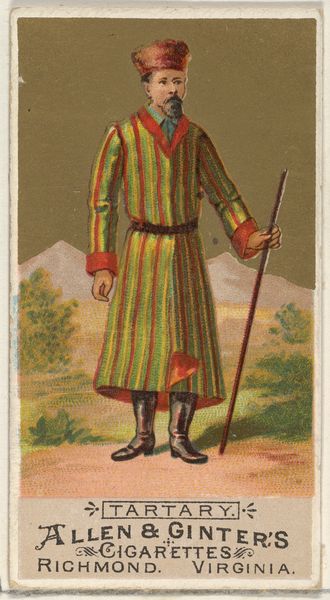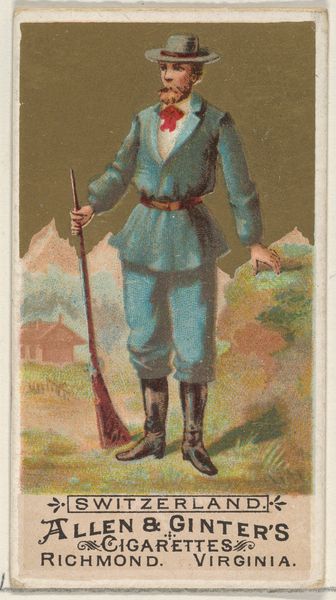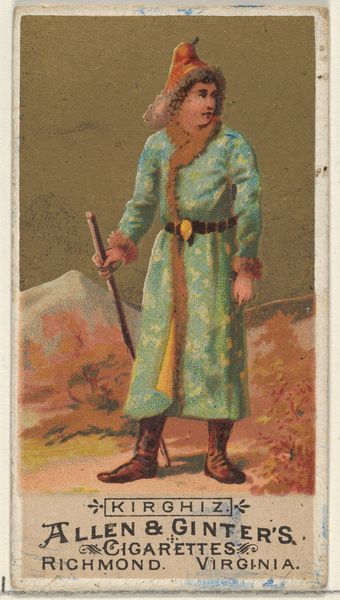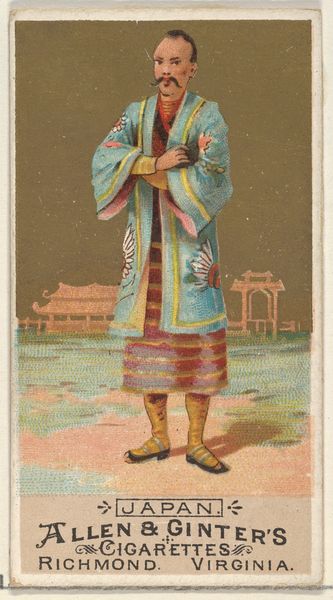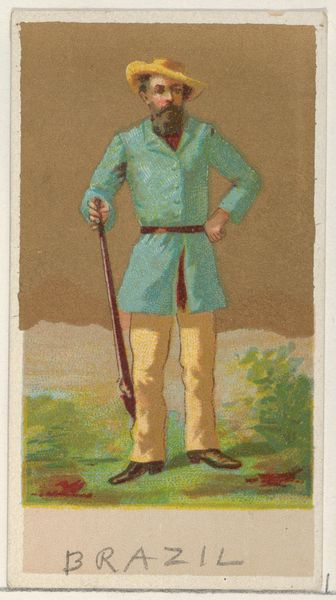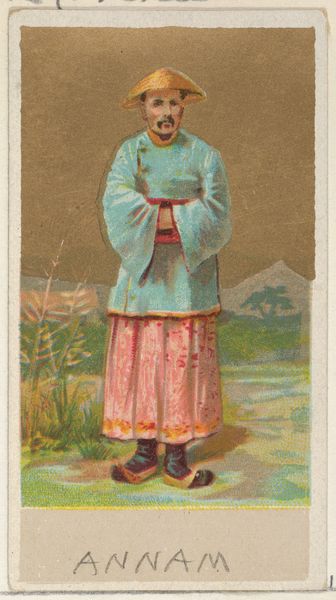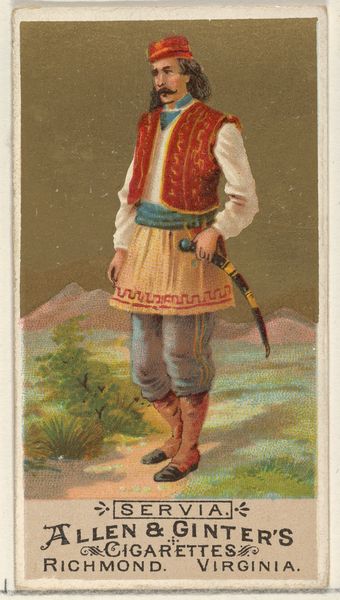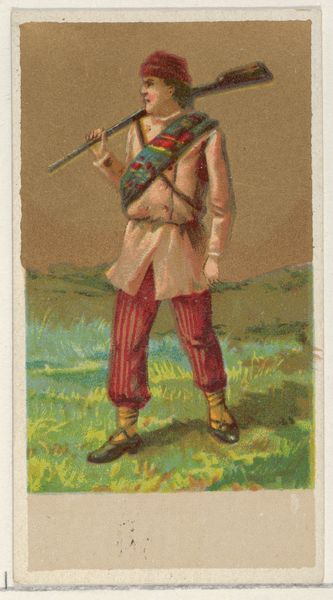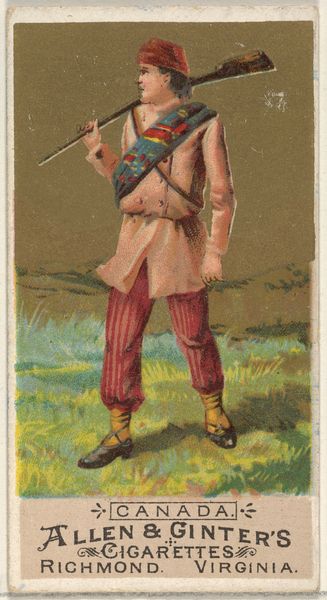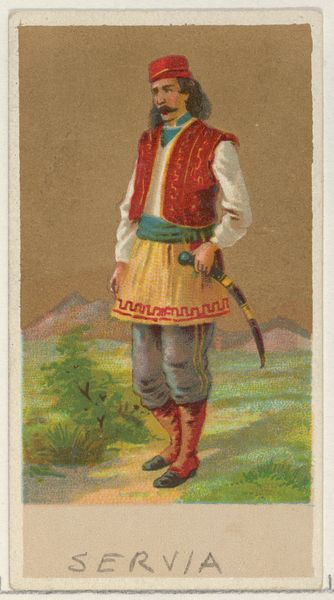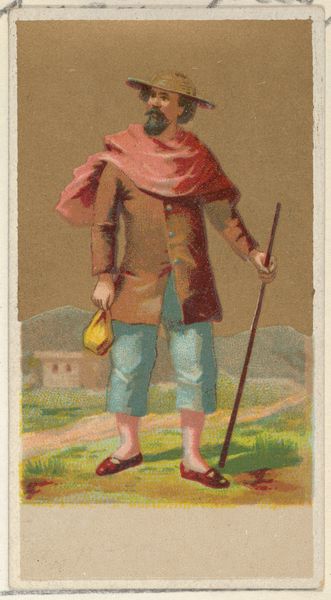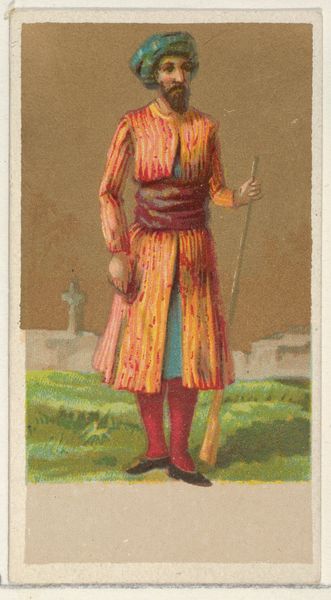
China, from the Natives in Costume series (N16), Teofani Issue, for Allen & Ginter Cigarettes Brands 1886 - 1900
0:00
0:00
Dimensions: Sheet: 2 3/4 x 1 1/2 in. (7 x 3.8 cm)
Copyright: Public Domain
Curator: This image is one from a series titled "Natives in Costume," specifically, "China, from the Natives in Costume series (N16), Teofani Issue, for Allen & Ginter Cigarettes Brands". Produced sometime between 1886 and 1900. Editor: It's remarkably striking for such a small format, instantly captivating with its somewhat muted palette offset by those intensely patterned trousers. It gives off an immediate air of composed dignity. Curator: Yes, part of a broader phenomenon of orientalism in visual culture at the time. Tobacco companies often utilized exoticized images from around the world to brand their products and associate them with luxury or adventure. The symbolism used is clearly based on second hand imagery. Editor: You can definitely feel the layering of cultural perspectives here. The man holds what seems to be a book, and he carries himself with such measured grace that it all conveys authority, perhaps a scholar or official? His slightly downturned eyes add an air of solemn wisdom. Curator: These images served a dual purpose: they provided consumers with glimpses of unfamiliar cultures, reinforcing America's place on the world stage. Also, promoting commercial brands through association with such figures. A classic case of how economic power co-opted and disseminated cultural imagery for capitalistic gains. The book likely alludes to westernized literacy. Editor: That contrast makes it particularly thought-provoking. Is he meant to embody traditional Chinese values, or is the artist hinting at a figure caught between worlds? The somewhat theatrical, posed quality hints at the constructed nature of the image. The baton, perhaps, is the symbol of command rather than enlightenment. Curator: Precisely! These cards created a cultural dialogue of sorts, one framed entirely through a Western lens and the agendas of corporations. What is authentic is up for debate when there is a power imbalance in its conception. Editor: Ultimately, though simplified in its construction and design for commerce, the image of the individual continues to inspire reflection on the impact of intercultural representation across various levels, economic, personal, social, cultural. Curator: Exactly, it forces us to acknowledge how even seemingly benign commercial images can play a powerful role in shaping and spreading socio-political beliefs and agendas.
Comments
No comments
Be the first to comment and join the conversation on the ultimate creative platform.

